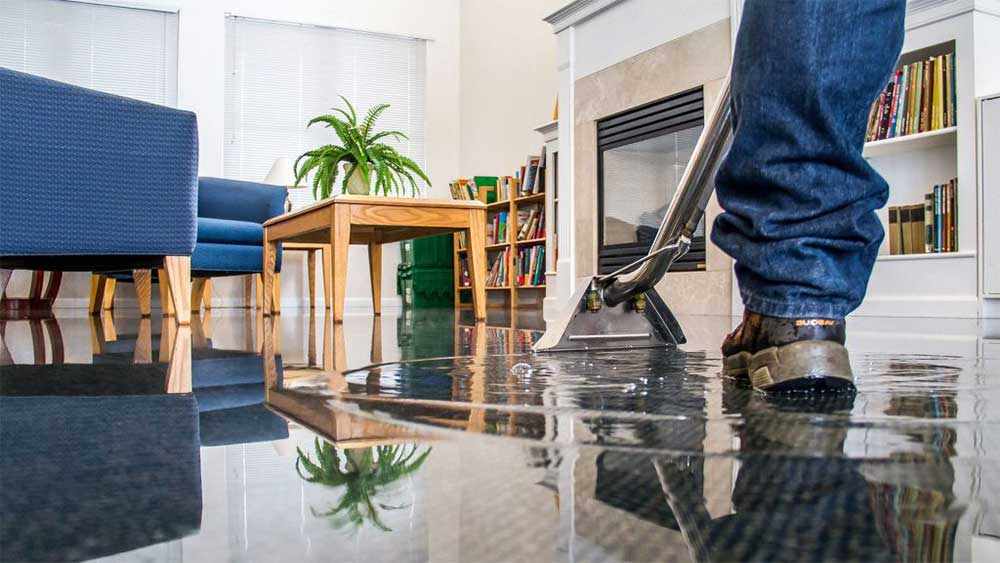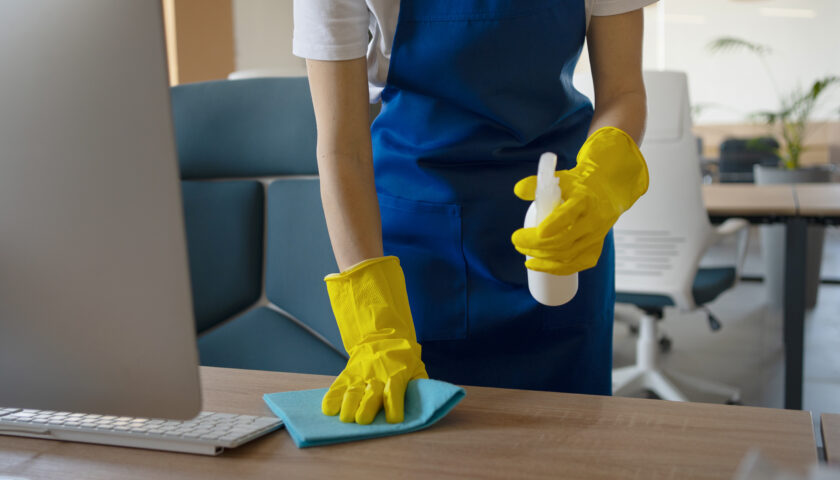One of the most crucial steps in flood damage cleanup in Hamilton is the removal of standing water. Professionals use high-powered water extractors to quickly and efficiently eliminate excess water from homes and businesses. These machines come in two main types: truck-mounted and portable extractors. Truck-mounted units provide powerful suction for large-scale flooding, while portable extractors are ideal for maneuvering into tight spaces, such as basements, for effective basement water damage restoration.
Industrial-Grade Dehumidifiers to Prevent Mold Growth
After the initial water removal, it’s essential to control humidity levels to prevent mold growth. Industrial-grade dehumidifiers are used to extract excess moisture from the air and surfaces. These powerful machines help speed up the drying process, reducing the chances of structural damage and airborne contaminants. In flood-damaged homes, desiccant dehumidifiers are particularly effective as they absorb moisture from the air using special drying agents.
High-Speed Air Movers for Faster Drying
Air movers play a significant role in flood damage cleanup Hamilton by accelerating evaporation. These high-powered fans circulate air across wet surfaces, allowing water to evaporate more quickly. They are strategically placed to maximize airflow in affected areas, especially in basement water damage restoration, where damp conditions can lead to persistent moisture issues.
Moisture Meters and Thermal Imaging Cameras for Precise Detection
Flood damage cleanup requires more than just surface drying. Hidden moisture pockets in walls, floors, and ceilings can lead to long-term damage if not properly addressed. Restoration professionals use moisture meters to assess the level of moisture present in different materials. Additionally, thermal imaging cameras help detect water trapped behind walls or under flooring, ensuring a thorough restoration process.
HEPA Air Scrubbers to Improve Air Quality
Flooding can lead to contamination and poor indoor air quality. HEPA (High-Efficiency Particulate Air) air scrubbers are used to remove airborne particles, mold spores, and other contaminants from the environment. These devices are essential in basement water damage restoration, where stagnant water and high humidity can create a breeding ground for mold and bacteria.
Commercial-Grade Pumps for Large-Scale Water Removal
In cases of severe flooding, commercial-grade pumps are used to remove large volumes of water quickly. Submersible pumps, often powered by electricity or gas, are particularly useful in flooded basements. Sump pumps are also commonly installed in basements to prevent future water accumulation and reduce the risk of recurring flood damage.
Specialized Cleaning Equipment for Sanitization
After water removal, thorough cleaning and sanitization are necessary to eliminate bacteria, mold, and other contaminants. Restoration professionals use industrial-grade disinfectants and antimicrobial treatments to sanitize surfaces and prevent health hazards. Additionally, wet vacuums and steam cleaners are used to deep-clean carpets, upholstery, and other porous materials affected by flooding.
Protective Gear for Safety During Flood Cleanup
Flood damage cleanup in Hamilton requires proper safety measures to protect restoration crews and homeowners. Personal protective equipment (PPE) such as gloves, masks, goggles, and waterproof boots are essential to prevent exposure to harmful contaminants. In cases of severe contamination, respirators may also be required to ensure safe air quality for workers.
Encapsulation Equipment to Seal and Protect Surfaces
Once the area is fully dried and sanitized, encapsulation is sometimes necessary to protect against future moisture-related issues. This process involves applying special sealants to surfaces like concrete, drywall, and wood to prevent further water damage. Encapsulation is particularly useful in basement water damage restoration, where recurring moisture problems can be a concern.
Why Professional Equipment Matters in Flood Damage Cleanup
Using professional-grade equipment ensures that flood damage cleanup in Hamilton is completed efficiently and thoroughly. DIY methods often fall short in addressing hidden moisture and potential contamination, leading to long-term problems. Hiring certified restoration professionals with access to advanced equipment guarantees a safer and more effective restoration process.
Flood damage cleanup in Hamilton requires specialized equipment to ensure thorough restoration. Professional restoration teams use high-powered water extractors, such as truck-mounted and portable units, to remove standing water efficiently. In basement water damage restoration, submersible pumps and sump pumps are essential for draining excess water.
Industrial-grade dehumidifiers help reduce humidity levels, preventing mold growth and structural damage. High-speed air movers accelerate drying by promoting air circulation, while moisture meters and thermal imaging cameras detect hidden moisture pockets in walls and floors.
HEPA air scrubbers improve indoor air quality by eliminating mold spores and contaminants. Commercial-grade disinfectants and steam cleaners sanitize affected surfaces, ensuring a safe living environment. Protective gear, including gloves, masks, and waterproof boots, safeguards workers during cleanup.
Encapsulation techniques, such as applying specialized sealants, help prevent future moisture issues in flood-prone areas. Using professional equipment ensures a comprehensive approach to basement water damage restoration, preventing long-term problems.
For effective flood damage cleanup in Hamilton, hiring professionals with access to advanced tools guarantees a faster, safer, and more efficient restoration process. Proper equipment and expertise make all the difference in restoring a property to its pre-flood condition.
Flood damage cleanup in Hamilton requires specialized equipment to ensure a thorough and efficient restoration process. Professionals use high-powered water extractors, including truck-mounted and portable units, to remove standing water quickly. For basement water damage restoration, submersible pumps and sump pumps help drain excess water efficiently.
Industrial-grade dehumidifiers reduce moisture levels, preventing mold growth and structural damage. High-speed air movers accelerate drying by circulating air over damp surfaces, while moisture meters and thermal imaging cameras detect hidden moisture pockets in walls and floors.
To improve indoor air quality, HEPA air scrubbers remove airborne contaminants and mold spores. Commercial-grade disinfectants and steam cleaners sanitize affected surfaces, eliminating bacteria and odors. Protective gear, including gloves, masks, and waterproof boots, ensures safety during the cleanup process.
Encapsulation techniques, such as applying specialized sealants, help prevent future moisture-related issues. Using professional equipment ensures a comprehensive approach to basement water damage restoration, preventing long-term problems like mold and structural weakening.
For effective flood damage cleanup in Hamilton, hiring professionals with advanced tools guarantees a faster, safer, and more reliable restoration. Proper equipment and expertise make a significant difference in restoring a property to its pre-flood condition.
Conclusion
Flood damage cleanup in Hamilton requires specialized equipment to ensure a safe and thorough restoration process. From high-powered water extractors and air movers to dehumidifiers and moisture meters, each tool plays a crucial role in mitigating damage and preventing future issues. In cases of basement water damage restoration, it’s essential to use the right equipment to address hidden moisture and contamination effectively. For homeowners dealing with flood damage, seeking professional assistance ensures a faster, safer, and more reliable cleanup process.





